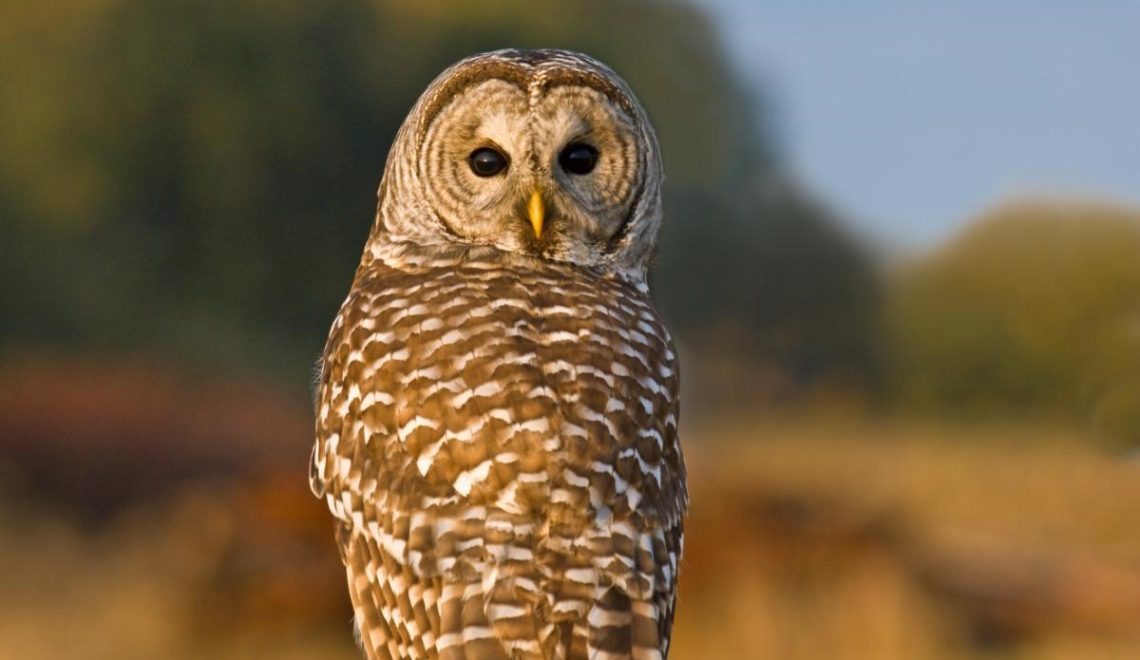
Bon Appetit, Owl!
| People are fascinated by owls. Whether a hoot in the stillness of night, or the penetrating stare of an owl seen during the day, the encounter is always unforgettable.
In addition to “wild” encounters, some have explored the lives of owls by dissecting an owl pellet to see what the undigestible remains reveal of an owl’s diet. Concluding, that owls predominately eat rodents. In reality, owls inhabit many ecosystems and their diets can be extraordinarily varied. Some owls, such as Barn Owls, are rodent specialists. Other owls are generalists and opportunistic consumers. A Great Horned Owl’s menu may include snakes, frogs, salamanders, birds, bats, cats, and even something as unappealing to a person as a skunk. It is well known that Barred Owls are displacing Northern Spotted Owls in Pacific Northwest forests. Many factors have contributed to the decline of the Spotted Owl and the rise of Barred Owls. Habitat loss and predation coupled with the aggressiveness and habitat flexibility of Barred Owls are major causes of this population shift. The composition of their diets also plays an important role. Northern Spotted Owls are small mammal specialists, with a preference for flying squirrels. Barred Owls are known for their incredibly varied diet. In addition to mammals and birds (including other owls), they are known to eat a variety of invertebrates and actively hunt earthworms mere feet from American Robins. Incredibly, Barred Owls have even been recorded consuming slugs, an animal most wouldn’t consider after a first taste. It is this adaptability within their diets (and not being picky eaters), that has largely contributed to the recent success of Barred Owls as a species. If you want to learn more about what owls eat for dinner, and the amazing adaptations they have that enable them to be such successful night hunters, join us tomorrow @ 2:30pm for our next virtual learning program! DRAC Director Powell Jones will look into the mysterious and fascinating lives of our local owls. Virtual Learning: OWLS Presented by Powell Jones Wednesday, September 9th 2:30pm Click here to register! |

Can’t make it to the talk tomorrow but want to learn more about owls? Check out Peterson Reference Guide to Owls of North America and the Caribbean for sale on our online bookstore!
“With detailed information about identification, calls, habitat, nesting, and behavior, this Reference Guide has the most up-to-date information about natural history, biology, ecology, migration, and conservation status. It is heavily illustrated with hundreds of color photos, and includes the most accurate color range maps ever presented, showing breeding, wintering, and migration routes.This is a definitive work, useful for serious birders and ornithologists but accessible for the non-expert.”

